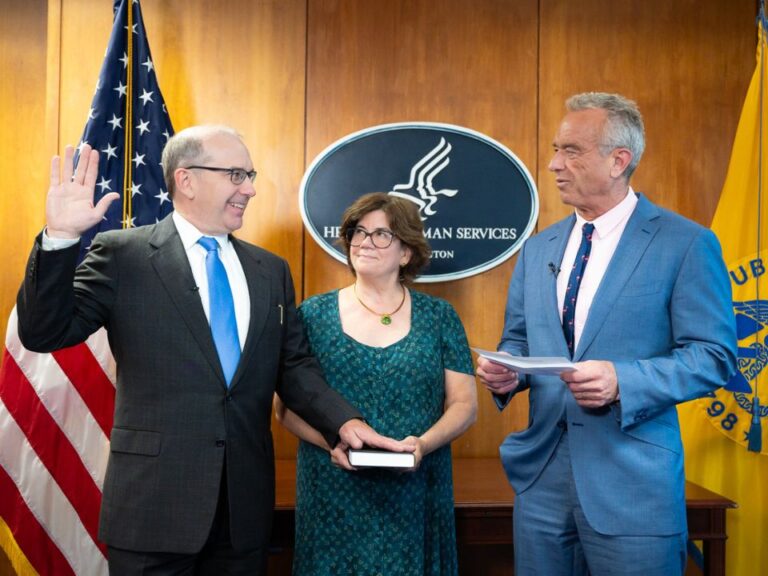NCI has truncated the just-renewed five-year Cancer Center Support Grant held by Wake Forest Baptist Comprehensive Cancer Center as that institution undergoes a bumpy transition of leadership—in the midst of a challenging integration with Atrium Health Levine Cancer Institute.
According to an NIH database, the duration of Wake Forest’s CCSG has been shortened by two years. NIH RePORTER, the database, was recently updated to reflect the change: the grant, which was originally set to run through Jan. 31, 2027, will now expire on Jan. 31, 2025.
In another change, the database shows that Wake Forest’s fired director Boris Pasche is no longer the principal investigator on the CCSG. He is replaced by Arthur W. Blackstock, chair of Radiation Oncology and a professor of cancer biology, who was appointed interim director.
The annual payout of the grant remains unchanged. The changes in the NIH RePORTER were made last week.
“Our recently received NCI notice of award is for 3 years, but we have an opportunity to secure funding for years 4 and 5 based on progress reported to the NCI and through the External Advisory Board reports,” Blackstock, who is also a member of the NCI Cancer Centers Study Section (A), said to The Cancer Letter.
Winston-Salem-based Wake Forest is a unit of Atrium Health, which also operates Charlotte-based Levine Cancer Institute. The two cancer centers—one NCI-designated, the other not—are in the midst of combining their operations.
“We have initiated a robust integration plan and process with full institutional commitments to meet NCI expectations of a fully integrated cancer center with the two sites under one director,” Blackstock said. “I’m confident that we will meet these requirements in partnership and in coordination with the Levine Cancer Institute leadership. We’ve already begun building upon our collective strengths, capabilities, and interests. Stakeholders are energized and engaged, and we’ve already seen many examples of scientific collaborations across the enterprise.”
Blackstock said the CCSG will reside at Wake Forest.
“NCI has no comment on this case beyond publicly available information on the website,” a spokesperson said.
NCI has been known to reduce the duration and size of grants whenever there are concerns about grantees continuing to meet the criteria of designation. Sometimes—not in this case—NCI has placed institutions on “a diet,” cutting the grant size.
Also, at times, NCI has been swayed by progress reports from the EABs in monitoring progress at institutions that are experiencing difficulties or veering off-course, insiders say. EABs provide directors of cancer centers with objective advice on issues involving NCI grants and serve at the directors’ pleasure.
“NCI peer review often responds to concerns regarding administrative organization or new leadership by reducing the number of years for which a grant is approved,” Donald “Skip” Trump, a historian of cancer centers, who has served as president and CEO at Roswell Park Cancer Institute, and, most recently, as president and executive vice president at Inova Schar Cancer Institute, said to The Cancer Letter.
“This [close monitoring] will allow the new leadership to establish a record of stability and scientific accomplishment; and the NCI to verify through peer review in three years that the center is ‘on track.’”
Cancer center directors recognize that, like baseball managers, they are hired to be fired. Firings aren’t always pretty, and their timing is important.
When the application fails, a director can be sacked right away. When the application is successful, a year after the notice of award from NCI seems to be the sweet spot for the bloody deed. This convinces NCI that the institution was truthful in its expression of support for the director in its application while also allowing the new director to put together an application for a competitive renewal.
Pasche’s firing, which occurred one day after the date marked on the notice of award, didn’t look good to Wake Forest’s EAB and to NCI. The notice of award was dated Feb. 9. Pasche was terminated on Feb. 10, with no cause cited.
Pasche declined to comment for this story.
On Feb. 18, Wake Forest’s entire 15-member EAB resigned, notifying the NCI Cancer Centers Branch and then NCI Director Ned Sharpless that it was retroactively withdrawing its support for Wake Forest’s application for competitive renewal of the CCSG (The Cancer Letter, Feb. 25, 2022).
During the site visit, the leadership of Wake Forest gave glowing reports of Pasche’s performance as director, the EAB resignation letter stated.
The EAB letter, dated Feb. 18, reads:
It is with sadness and dismay that we witnessed the change in approach by the institutional leadership towards the WFBCCC. The leadership gave their glowing endorsement of Dr. Pasche during EAB meetings and site visit rehearsals, within the written application, and at the site visit itself. This endorsement included unequivocal statements of support for Dr. Pasche’s oversight of the combined Atrium-Wake Forest cancer program.
What followed was his rapid dismissal after the P30 notice of award was issued, following a period during which the approach to integration was apparently being revisited.
A week after the EAB’s resignation, NCI froze Wake Forest’s CCSG funds pending further discussion of the relationship between Wake Forest and Levine as well as impact of the change of leadership on the scientific direction of programs described in the grant.
Blackstock said Wake Forest will serve as home for the P30 grant, and the Wake Forest EAB, which has since been reassembled, will play a role in stabilizing the dealings with the institute. Levine has a separate EAB.
Said Blackstock:
We have reconstituted a stellar EAB, with seven prior members of the EAB as well as with several new exceptional additions who have been recruited for their expertise and to fill perceived areas of expertise that were not adequately represented on our prior EAB. We had our first successful and productive EAB meeting on May 13.
The EAB, led by Dr. Edward Chu as chair, will be providing valuable insight and guidance moving forward, as we navigate the challenges of integrating two complex health systems. Our progress, as reviewed and determined by the EAB, will be submitted to the NCI.
Wake Forest’s reconstituted External Advisory Board.
| Edward Chu Montefiore Einstein | Chair |
| Costas Komenis University of Pennsylvania | |
| Carmen Guerra University of Pennsylvania | |
| Robert Diasio* Mayo Clinic | |
| Helen Heslop* Baylor College of Medicine | |
| Anita Kinney* Rutgers Global Health Institute | |
| Linda Liau UCLA | |
| Robin Mermelstein* University of Illinois Chicago | |
| Brian Springer* Moffitt Cancer Center | Ad Hoc Advisor |
| George Weiner* University of Iowa | Ad Hoc Advisor |
| Danny Welch* University of Kansas | |
| Robert Dreicer UVA | |
| Lovoria Williams University of Kentucky |
Directors of other cancer centers said they aren’t surprised by NCI’s actions.
“I think NCI appropriately sees themselves as full partners in CCSGs, and does not like being surprised by sudden changes in leadership within institutions that they support,” said a cancer center director who spoke on the condition that his name wouldn’t be used. “I am aware of NCI leadership reducing CCSG durations from five to three years, though not in precisely these circumstances. To me, this move represents a vote of no or little confidence in Wake Forest’s administration.”
Another center director said the situation is straightforward.
NCI peer review often responds to concerns regarding administrative organization or new leadership by reducing the number of years for which a grant is approved.
Donald “Skip” Trump
“NCI was making the grant award based on the assumption that there was stable scientific leadership and stable administrative structure,” the center director said. “What I would interpret the reduction of time to be is that they would like to see whether the trajectory has been altered in a meaningful way by the change of leadership. Now that the award has been reduced, it means that they don’t feel confident that a 5-year runway was appropriate, given this abrupt leadership change.”
The job ahead is anything but straightforward. Wake Forest and Levine are very different institutions with very different cultures. Wake Forest has held the Comprehensive Cancer Center designation since 1990 (The Cancer Letter, Aug. 10, 1990).
Levine was engineered by Derek Raghavan, an academic oncologist and cancer center director—regarded as a visionary by many—as a model for “hybrid” centers that combine the features of academic and community centers without necessarily seeking NCI designation (The Cancer Letter, Jan. 4, Jan. 11, 2013).
Blackstock said:
Broadly speaking, the Atrium Health Wake Forest Baptist Comprehensive Cancer Center is strong in population health science; both wet and dry laboratory research; and peer-reviewed funding, while the Atrium Levine Cancer Institute is strong in drug discovery and development and industry funding.
Atrium also has a strong commitment to supportive oncology, and has a number of fellowship training programs. With the integration of the Atrium Health Wake Forest and Levine Cancer Institute, the number of analytical cancer cases will increase to almost 14,000 patients in aggregate.
WFBCCC serves as a research base for NCORP—adding LCI accruals would be impactful to our cancer prevention and control research. Our expanded catchment area will provide a critical opportunity to increase our established rural population base and additionally, increase our opportunity for minority accruals.
Our strategic priorities include tobacco and health disparities, which are also strengths at LCI. We’ve already created a thoracic oncology clinical workgroup with twenty-four team members across both Wake Forest and LCI that aims to integrate and improve access, experience, and outcomes for patients. There are four focus areas: 1) lung screening, 2) incidental lung nodule, 3) tobacco cessation, and 4) diagnostics and therapeutics.
The Wake Forest and the LCI neuro-oncology teams have enjoyed a twenty-year collaboration, and with this integration will begin to harmonize brain tumor tissue banking and clinical next generation sequencing practices.
Atrium has a number of research labs/shared resources, among them biospecimen repository and histology, clinical genomics, and immune monitoring labs. We are in the process of visiting each other’s labs and designing a user needs assessment for investigators across the combined enterprise.
Although we’ve just begun a formal integration process, we’re already pursuing extramural funding for team science that spans Wake Forest and Atrium Health. We don’t expect the integration to be easy, but we are excited about the impact that this partnership will have on our science.
The challenge of hybridizing the hybrid center with an academic center may have grown more profound recently, as Atrium announced plans to merge with another big health system, Advocate Aurora Health.
Together, the health systems will serve 5.5 million patients, operate more than 1,000 sites of care and 67 hospitals, employ more than 7,600 physicians and nearly 150,000 employees, and have combined revenues of more than $27 billion.










